Art of Feng shui in Modern Home and office Introduction:

Welcome to our comprehensive guide on mastering the Art of Feng shui in Modern Home and office. In this post, we’ll explore how you can incorporate the ancient wisdom of Feng Shui to create harmonious and balanced spaces that promote well-being and productivity.
Feng Shui, which translates to “wind and water,” is a centuries-old Chinese practice that focuses on the arrangement of objects and spaces to enhance the flow of energy, or Qi. By following Feng Shui principles, you can create environments that support your physical, emotional, and spiritual needs.
In today’s fast-paced world, where stress and distractions abound, integrating Feng Shui into your living and working spaces can provide a sense of calm and clarity. Whether you’re redesigning your home or revamping your office, understanding the fundamentals of Feng Shui can help you achieve a more balanced and harmonious environment.
Throughout this guide, we’ll delve into the key principles of Feng Shui, explore practical tips for applying them to your space, and showcase real-world examples of how Feng Shui can transform your surroundings.

Purpose/Functionality in Art of Feng Shui :
When considering Feng Shui products for your home or office, it’s essential to understand their purpose and functionality in enhancing the flow of energy and promoting harmony. Each product serves a specific role in aligning your space with Feng Shui principles, contributing to a more balanced and auspicious environment.



- Feng Shui Crystals:
- Purpose: Feng Shui crystals, such as crystal balls or crystal clusters, are believed to attract and amplify positive energy while dispelling negative energy. They can be strategically placed to enhance the flow of Qi and create a sense of balance and harmony.
- Functionality: Crystals are commonly used to remedy specific Feng Shui challenges, such as stagnant energy or Sha Qi (negative energy). They can also be used to activate certain areas of the Bagua Map to manifest desired outcomes in areas such as wealth, health, or relationships.
- Some Recommendations of Purchase 1) Citrine Crystal 2) Feng Shui Crystal 3) Feng Shui Crystal2 4) Feng Shui Crystal3
- Feng Shui Fountain:
- Purpose: A Feng Shui fountain is designed to activate the flow of wealth and prosperity while bringing a sense of serenity and tranquility to a space. The movement of water is believed to generate positive energy and symbolize abundance and vitality.
- Functionality: Fountains are placed in strategic locations, such as the wealth area (Southeast) or the career area (North), to enhance the flow of Qi and attract opportunities for success. They can also be used to counteract Sha Qi, such as sharp angles or harsh lines, by introducing a soothing and harmonious element.
Materials Used in Art Of Feng Shui :
When selecting Feng Shui products for your home or office, the materials used in their construction play a crucial role in enhancing their effectiveness and compatibility with Feng Shui principles. By choosing materials that resonate with the elements and energies associated with Feng Shui, you can create a harmonious and balanced environment that supports your well-being and goals.
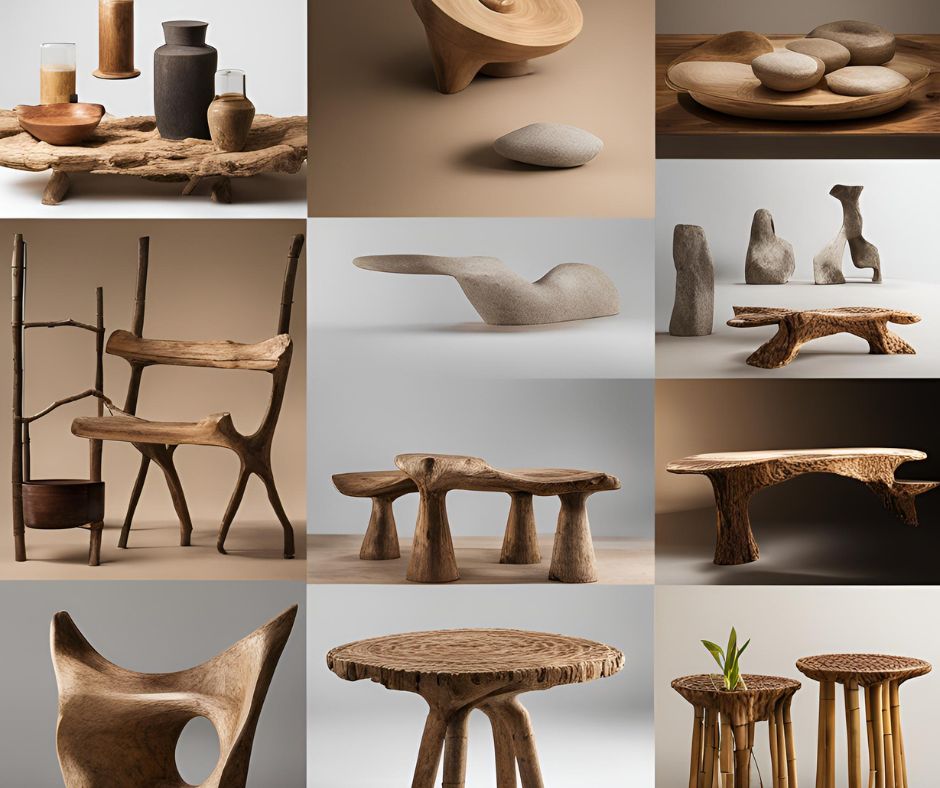


- Natural Materials:
- Natural materials such as wood, stone, bamboo, and clay are highly favored in Feng Shui for their organic and grounding properties. These materials are believed to embody the essence of nature, connecting inhabitants with the Earth’s energy and promoting a sense of stability and tranquility.
- Some Recommendations Bamboo1 Bamboo2 and Money Tree Money Tree2
- Incorporating furniture, decor, and accessories made from natural materials can help create a warm and inviting atmosphere while fostering a deeper connection to the natural world.
- Some Options 1) Feng Shui Mirror 2) Feng Shui Mirror 3) Feng Shui Mirror
- Metals:
- Metals such as brass, copper, and bronze are commonly used in Feng Shui to symbolize strength, clarity, and abundance. Each metal has unique properties and associations that can be utilized to enhance specific areas of a space according to the Bagua Map.
- Metal elements are often incorporated into decor and accessories, such as sculptures, candle holders, or wind chimes, to activate the energy of certain guas and promote balance and prosperity.
- Recommendations of Metal Articles 1) Wind Chime 2) Wind Chime 3) Feng Shui Fan 4) Metal Decor
- Colors:
- Colors play a significant role in Feng Shui as they have the power to evoke specific energies and emotions. By selecting colors based on Feng Shui principles, you can create a harmonious color palette that supports the desired energy flow within your space.
- For example, warm colors like red, orange, and yellow are associated with the fire element and are often used to stimulate energy and creativity, while cool colors like blue, green, and purple represent the water and wood elements, promoting calmness and growth. Try This Feng Shui Color Balls
- Textiles:
- Textiles such as fabrics, rugs, and curtains contribute to the overall atmosphere and energy of a space in Feng Shui. Choosing textiles made from natural fibers like cotton, silk, and wool is preferred, as they are believed to have a positive impact on the energy flow within a room.
- Textiles can be selected based on their color, texture, and pattern to create a sense of balance and harmony in accordance with Feng Shui principles.
Design Aesthetics in Art of Feng Shui :
In Feng Shui, design aesthetics play a crucial role in creating environments that are not only visually appealing but also conducive to positive energy flow and harmony. By paying attention to the aesthetics of your space, you can cultivate an atmosphere that promotes well-being, productivity, and balance.



- Balance and Symmetry:
- Balance and symmetry are fundamental principles in Feng Shui design. A balanced space feels harmonious and visually pleasing, creating a sense of equilibrium and stability. Achieving balance involves distributing visual weight evenly throughout a room by arranging furniture, decor, and architectural elements in a symmetrical manner.
- Incorporating pairs of objects, such as matching chairs or bedside tables, can enhance symmetry and promote a sense of unity within the space.
- Clean Lines and Clutter-Free Spaces:
- Clean lines and clutter-free spaces are essential for promoting clarity and tranquility in Feng Shui design. A cluttered environment disrupts the flow of energy, or Qi, and can lead to feelings of stress and overwhelm. Embracing simplicity and minimalism allows Qi to circulate freely, fostering a sense of calmness and openness.
- Choose furniture and decor with clean lines and simple shapes to create a streamlined and uncluttered look. Incorporate smart storage solutions to keep clutter at bay and maintain a sense of spaciousness.
- Natural Elements and Organic Forms:
- Incorporating natural elements and organic forms in your decor enhances the connection to nature and promotes a sense of vitality and rejuvenation. Natural materials such as wood, stone, and plants bring warmth and texture to a space, while evoking a sense of serenity and grounding.
- Integrate natural elements through furniture, decor accents, and artwork inspired by the natural world. Consider adding indoor plants, rocks, or water features to introduce elements of nature into your environment.
- Harmony of Colors and Textures:
- Colors and textures have a profound impact on the energy and atmosphere of a space in Feng Shui design. Harmonizing colors and textures creates visual interest while promoting balance and unity. Choose colors that evoke the desired energy for each area of your space, such as calming blues for the bedroom or energizing reds for the dining room.
- Layering textures adds depth and richness to a space, creating a sensory experience that stimulates the mind and soul. Mix and match textures such as smooth silk, rough stone, and soft wool to create a dynamic and inviting environment.
Size and Scale:
In Feng Shui design, paying attention to size and scale is essential for creating harmonious and balanced spaces that promote positive energy flow. Properly scaled furnishings and decor contribute to the overall aesthetic appeal of a room while ensuring that the energy remains balanced and conducive to well-being.

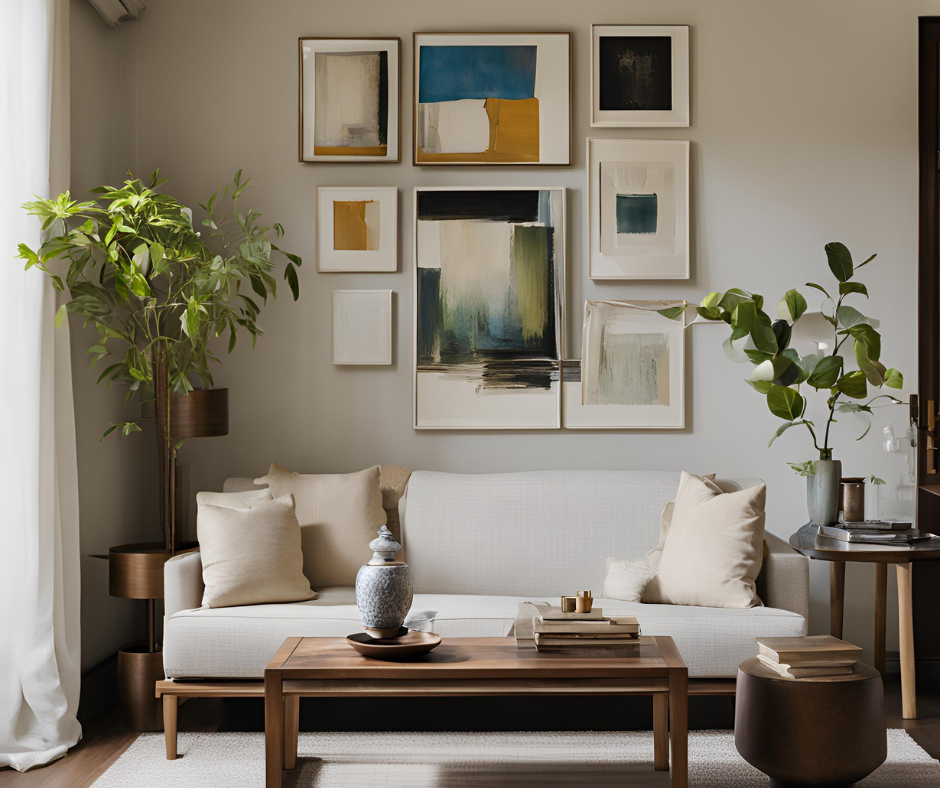

- Proportionate Furnishings:
- Choosing furnishings that are proportionate to the size of the room is key to creating a balanced and harmonious environment. Oversized furniture can overwhelm a space and disrupt the flow of Qi, while undersized furniture can make a room feel sparse and uninviting.
- Consider the scale of the room when selecting furniture pieces, ensuring that they complement the space without overpowering it. A spacious living room may accommodate larger sofas and coffee tables, while a cozy bedroom may benefit from smaller-scale furniture to create a more intimate atmosphere.
- Balanced Arrangements:
- Arranging furniture and decor in a balanced manner is crucial for optimizing energy flow in Feng Shui design. Aim for symmetry and harmony in your arrangements, placing furniture and decor items in relation to one another to create a sense of equilibrium.
- Avoid overcrowding or clustering furniture in one area of the room, as this can disrupt the flow of Qi and create obstacles to movement. Instead, distribute furniture evenly throughout the space, leaving ample room for Qi to circulate freely.
- Proportional Decor:
- Decorative elements such as artwork, mirrors, and lighting fixtures should also be scaled appropriately to the size of the room and the furnishings within it. Oversized artwork can overwhelm a space, while undersized pieces may get lost in the room’s surroundings.
- Choose decor items that complement the scale of the room and enhance its overall aesthetic appeal. Consider the placement of decor elements in relation to furniture and architectural features to create a cohesive and balanced look.
- Creating Visual Balance:
- Visual balance is achieved through a combination of size, shape, color, and texture in Feng Shui design. By carefully considering these elements, you can create a visually pleasing environment that promotes a sense of harmony and well-being.
- Experiment with different arrangements and configurations to find the optimal balance for your space. Pay attention to the placement of larger pieces to anchor the room and smaller accents to add interest and depth.
Consider the size and scale of each product in relation to the intended space, ensuring compatibility with Feng Shui guidelines for proportion and balance.
Placement Guidelines:
In Feng Shui design, the placement of furniture, decor, and other elements within a space is crucial for optimizing energy flow and creating a harmonious environment. By following placement guidelines based on Feng Shui principles, you can enhance the flow of Qi and promote balance and well-being in your home or office.



When incorporating Feng Shui products into your home or office design, it’s essential to consider both the cost of the products and their value in promoting harmony and well-being. While some Feng Shui products may come with a higher price tag, their benefits in optimizing energy flow and creating a harmonious environment can provide long-term value and positive outcomes.
- Initial Cost:
- The initial cost of Feng Shui products can vary depending on factors such as materials, craftsmanship, and brand reputation. Higher-quality products made from natural materials or crafted by skilled artisans may come with a higher price tag than mass-produced alternatives.
- Consider your budget and prioritize which Feng Shui products are most important for achieving your design goals. Allocate funds accordingly, focusing on essential items that will have the greatest impact on energy flow and harmony in your space.
- Long-Term Value:
- While the initial cost of Feng Shui products may seem significant, it’s essential to consider their long-term value in promoting well-being and prosperity. Investing in high-quality products that are designed to last can provide ongoing benefits and contribute to a positive living or working environment.
- Consider the potential return on investment in terms of improved health, productivity, and overall quality of life. Feng Shui products that enhance energy flow and promote harmony can contribute to a sense of balance and fulfillment that transcends monetary value.
- Cost-Effectiveness:
- Evaluate the cost-effectiveness of Feng Shui products based on their ability to deliver tangible benefits and outcomes. While some products may have a higher upfront cost, their effectiveness in optimizing energy flow and promoting well-being may justify the investment over time.
Energy Enhancement:
In Feng Shui design, the goal is to enhance the flow of energy, or Qi, within a space to promote balance, harmony, and well-being. By incorporating elements and techniques that optimize energy flow, you can create environments that feel vibrant, uplifting, and conducive to positive experiences.


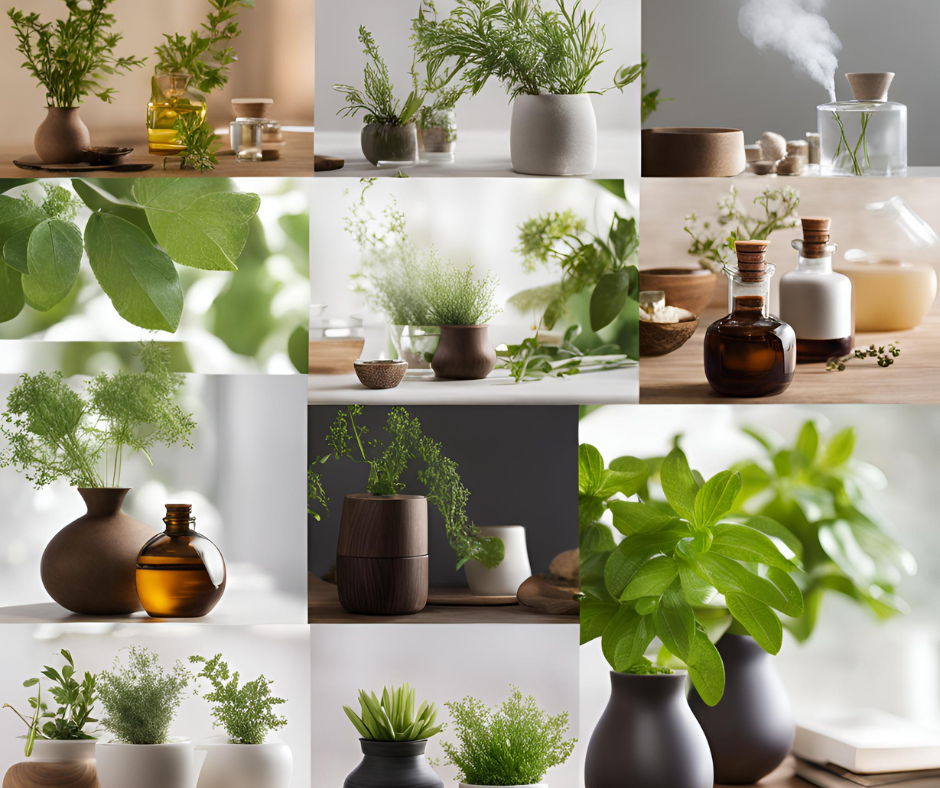
Cost and Value:
- Natural Light:
- Natural light is one of the most potent sources of positive energy in Feng Shui design. Maximizing natural light in your space not only brightens the environment but also uplifts the mood and enhances vitality.
- Ensure that windows are unobstructed to allow ample sunlight to filter into the room. Use sheer curtains or blinds to diffuse harsh sunlight while still allowing natural light to penetrate the space.
- Air Circulation:
- Good air circulation is essential for maintaining a healthy and vibrant environment in Feng Shui design. Stagnant air can lead to stagnation of energy, while fresh air promotes vitality and clarity.
- Open windows regularly to allow fresh air to circulate throughout the space. Use fans or air purifiers to improve air quality and promote better Qi flow.
- Sound Therapy:
- Sound therapy is a powerful technique used in Feng Shui to cleanse and energize a space. Harmonious sounds, such as wind chimes or running water, can help disperse stagnant energy and create a sense of tranquility.
- Place wind chimes near windows or doorways to activate positive energy and invite auspicious opportunities into your space. Consider incorporating a water fountain or indoor waterfall to introduce the soothing sound of flowing water.
- Aromatherapy:
- Aromatherapy is another effective way to enhance energy flow and promote well-being in Feng Shui design. Certain scents, such as citrus, lavender, and eucalyptus, are known for their uplifting and purifying properties.
- Use essential oils or scented candles to infuse your space with pleasant aromas that uplift the spirit and clear negative energy. Place aromatic plants, such as jasmine or rosemary, in strategic locations to purify the air and promote a sense of calmness.
Customer Reviews/Testimonials:
Customer reviews and testimonials play a vital role in helping potential buyers make informed decisions when purchasing Feng Shui products for their home or office. Hearing from others who have firsthand experience with the products can provide valuable insights into their effectiveness, quality, and overall satisfaction.
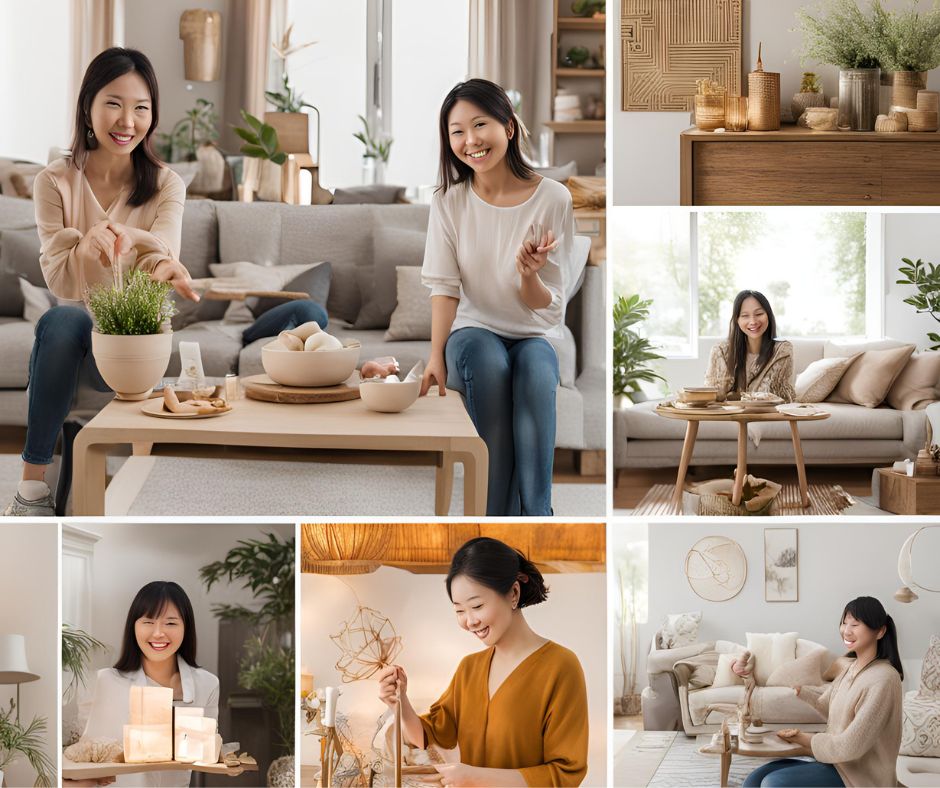
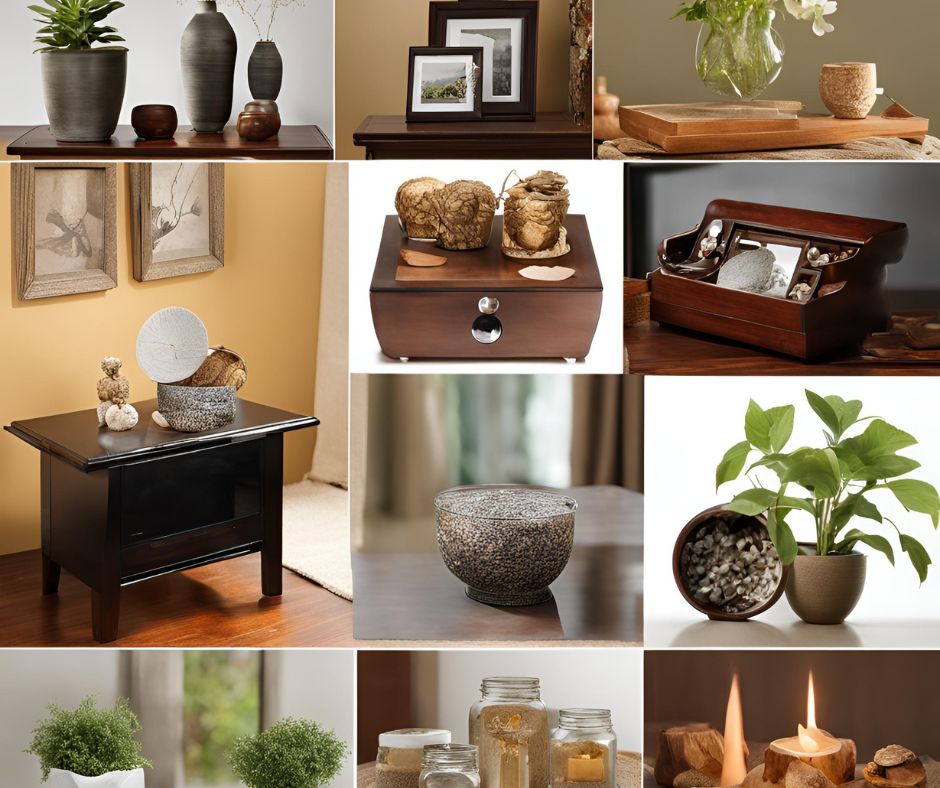
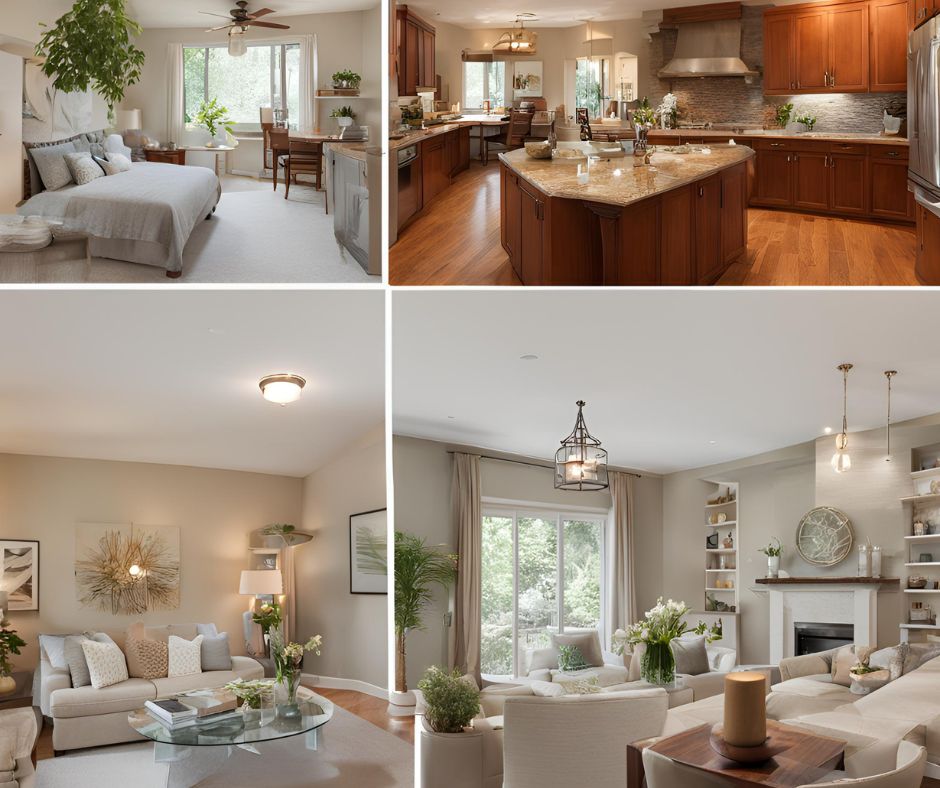
- Authentic Feedback:
- Customer reviews and testimonials offer authentic feedback from individuals who have purchased and used Feng Shui products in their own spaces. Reading about their experiences, both positive and negative, can help you gauge the effectiveness and suitability of the products for your needs.
- Look for reviews that provide specific details about the product’s performance, durability, and impact on energy flow and harmony. Authentic feedback from real customers can help you make confident decisions when selecting Feng Shui products.
- Product Recommendations:
- Customer reviews and testimonials often include product recommendations and suggestions for how to incorporate Feng Shui products into your home or office design. Reading about others’ success stories and creative applications can inspire you to explore new possibilities for enhancing your space.
- Pay attention to reviews from customers who share similar goals or challenges to yours. Their recommendations may resonate with your own aspirations and help you identify the best Feng Shui products for achieving your desired outcomes.
- Insight into Customer Experience:
- Customer reviews and testimonials provide insight into the overall customer experience, including factors such as shipping, packaging, and customer service. Learning about others’ experiences with the purchasing process can help you anticipate what to expect when ordering Feng Shui products online or from a store.
- Look for reviews that mention exceptional customer service or positive interactions with the seller. A positive customer experience can enhance your confidence in the reliability and professionalism of the company behind the products.
- Validation of Product Benefits:
- Positive customer reviews and testimonials serve as validation of the benefits and effectiveness of Feng Shui products in promoting harmony and well-being. Hearing about others’ positive experiences can reassure you that investing in Feng Shui products is worthwhile and can lead to tangible improvements in your space.
- Look for reviews that highlight specific benefits or outcomes experienced by customers, such as increased energy levels, improved sleep quality, or enhanced relationships. Real-life success stories can affirm the transformative power of Feng Shui in creating balanced and harmonious environments.
Ease of Use/Installation:
When selecting Feng Shui products for your home or office, considering their ease of use and installation is essential for a seamless and stress-free experience. Products that are straightforward to use and install not only save time and effort but also ensure that you can quickly reap the benefits of incorporating Feng Shui into your space.
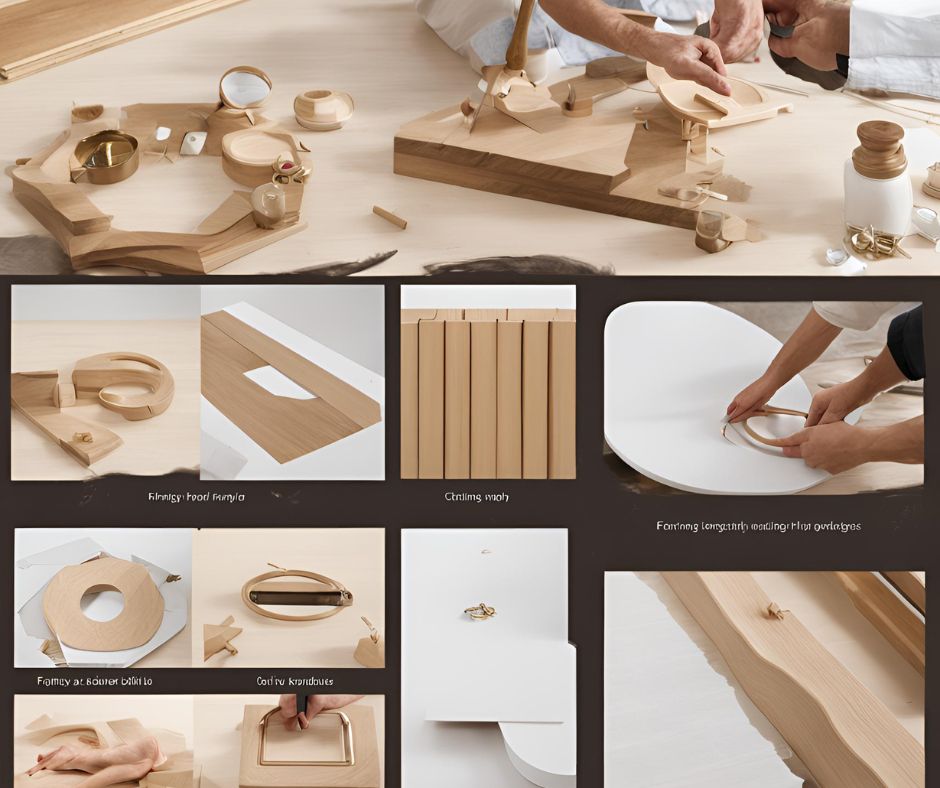


- Simple Assembly:
- Many Feng Shui products, such as decor accents, furniture pieces, and accessories, come with straightforward assembly instructions that make setup quick and hassle-free. Look for products that require minimal assembly and provide clear, easy-to-follow instructions.
- Prioritize products that come with all the necessary hardware and tools for assembly included. This ensures that you have everything you need to set up the product without having to make additional trips to the hardware store.
- Intuitive Design:
- Choose Feng Shui products with intuitive designs that are easy to understand and use, even for beginners. Products that are designed with user convenience in mind streamline the installation process and eliminate unnecessary complexity.
- Look for features such as labeled parts, color-coded instructions, and intuitive interfaces that make setting up and using the product a breeze. Intuitive design enhances user satisfaction and ensures that you can start enjoying the benefits of Feng Shui in your space right away.
- Compatibility with Different Spaces:
- Consider the compatibility of Feng Shui products with different types of spaces, including homes, apartments, offices, and commercial properties. Products that are versatile and adaptable can be easily incorporated into a variety of environments, regardless of size or layout.
- Look for products that offer flexible installation options, such as adjustable mounting brackets or modular components, that allow you to customize the product to fit your specific space requirements. Compatibility with different spaces ensures that you can achieve optimal results no matter where you live or work.
- Customer Support:
- Choose Feng Shui products from reputable manufacturers or retailers that offer reliable customer support and assistance. In the event that you encounter any difficulties during installation or use, having access to knowledgeable and responsive customer support can help resolve issues quickly and efficiently.
- Research the manufacturer’s customer support policies and read reviews from other customers to gauge their level of satisfaction with the company’s support services. Prompt and helpful customer support enhances the overall user experience and ensures that you can make the most of your Feng Shui products.
Longevity and Durability:
When investing in Feng Shui products for your home or office, considering their longevity and durability is crucial for ensuring that they continue to enhance your space for years to come. Products that are well-made and built to last not only offer long-term value but also provide peace of mind knowing that your investment will stand the test of time.



- Quality Materials:
- Choose Feng Shui products made from high-quality materials that are known for their durability and longevity. Materials such as solid wood, metal alloys, and natural stones are often favored for their strength and resilience.
- Prioritize products that are crafted with attention to detail and precision, using quality craftsmanship techniques that ensure durability and longevity. Quality materials and construction contribute to the overall longevity of the product, ensuring that it remains functional and aesthetically pleasing for years to come.
- Sturdy Construction:
- Look for Feng Shui products with sturdy construction and robust design features that can withstand daily use and wear. Products that are built with reinforced joints, durable finishes, and solid construction are more likely to maintain their integrity over time.
- Consider the weight and stability of the product, particularly for larger items such as furniture or decor accents. Sturdy construction prevents tipping or wobbling, ensuring safety and longevity in your space.
- Resistance to Wear and Tear:
- Choose Feng Shui products that are resistant to wear and tear, particularly in high-traffic areas or environments prone to damage. Products with scratch-resistant finishes, fade-resistant colors, and easy-to-clean surfaces are more likely to retain their appearance and functionality over time.
- Consider the specific needs of your space when selecting products, such as resistance to moisture in bathrooms or kitchens, or UV resistance for outdoor use. Products that are designed to withstand environmental factors and daily use will maintain their longevity and durability in any setting.
- Warranty and Guarantee:
- Check if the manufacturer offers a warranty or guarantee on their Feng Shui products, as this provides added assurance of their longevity and durability. A warranty protects against defects in materials or workmanship and may offer repair or replacement services in the event of damage.
- Review the terms and conditions of the warranty, including the duration of coverage and any exclusions or limitations. A comprehensive warranty reflects the manufacturer’s confidence in the quality and durability of their products, providing peace of mind for your investment.
Conclusion/Summary:



In conclusion, mastering the art of Feng Shui in home and office design offers numerous benefits for creating harmonious, balanced, and inviting environments that support well-being and productivity. By incorporating Feng Shui principles into your space and selecting the right Feng Shui products, you can optimize energy flow, enhance aesthetic appeal, and promote a sense of harmony and balance.
Throughout this guide, we’ve explored key aspects of Feng Shui design, including the selection of Feng Shui products based on their purpose, materials, design aesthetics, size and scale, placement guidelines, energy enhancement features, cost and value considerations, ease of use/installation, longevity and durability, and the importance of customer reviews and testimonials.
By considering these factors and incorporating Feng Shui products that align with your goals and preferences, you can create environments that not only look beautiful but also feel vibrant, uplifting, and supportive of your overall well-being. Whether you’re redesigning your home, revamping your office, or simply looking to enhance the energy of your space, embracing the art of Feng Shui can lead to transformative results that positively impact your life.
“Disclosure: This post contains affiliate links. If you click and make a purchase, I may earn a small commission at no extra cost to you. Thank you for your support!”





